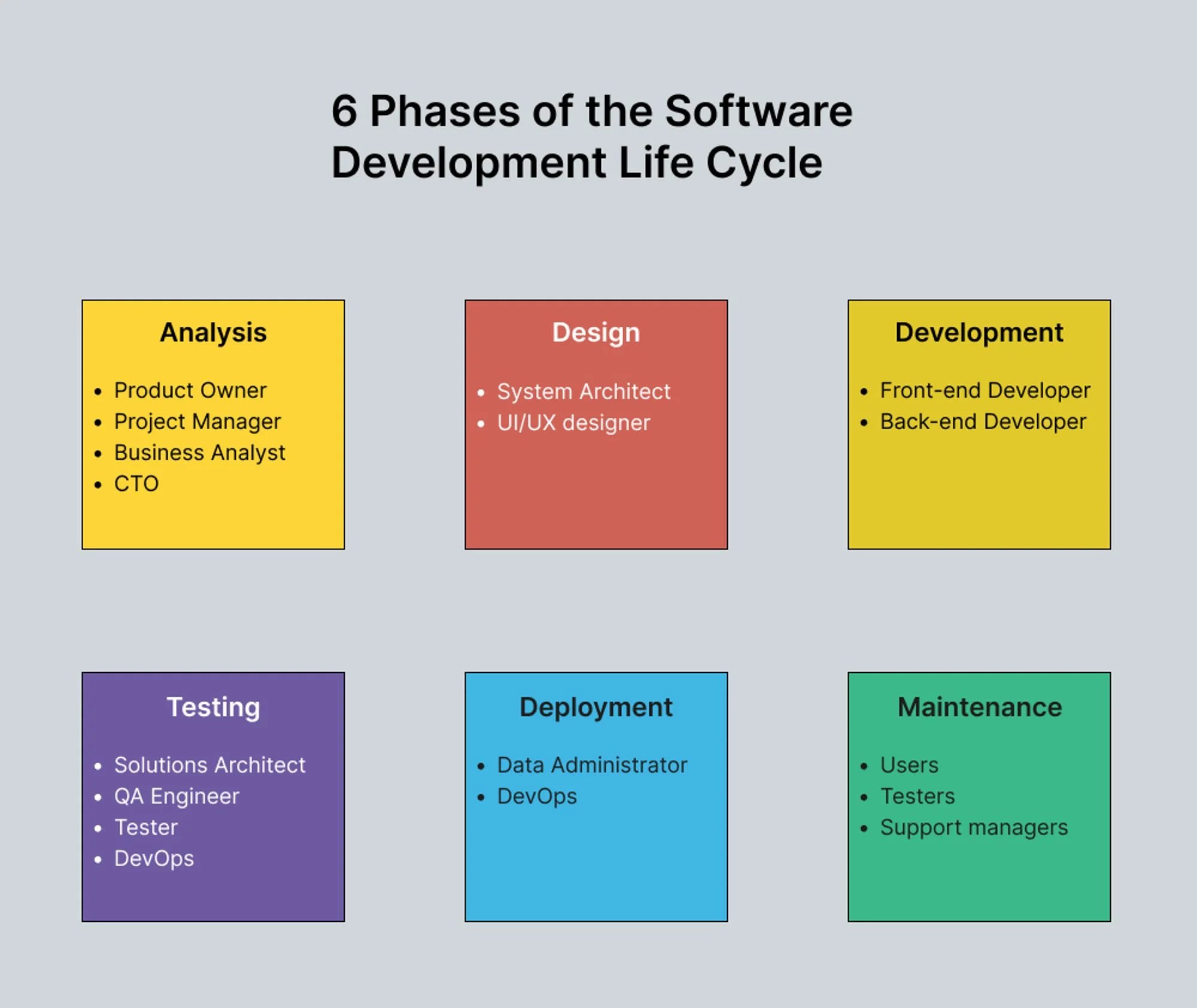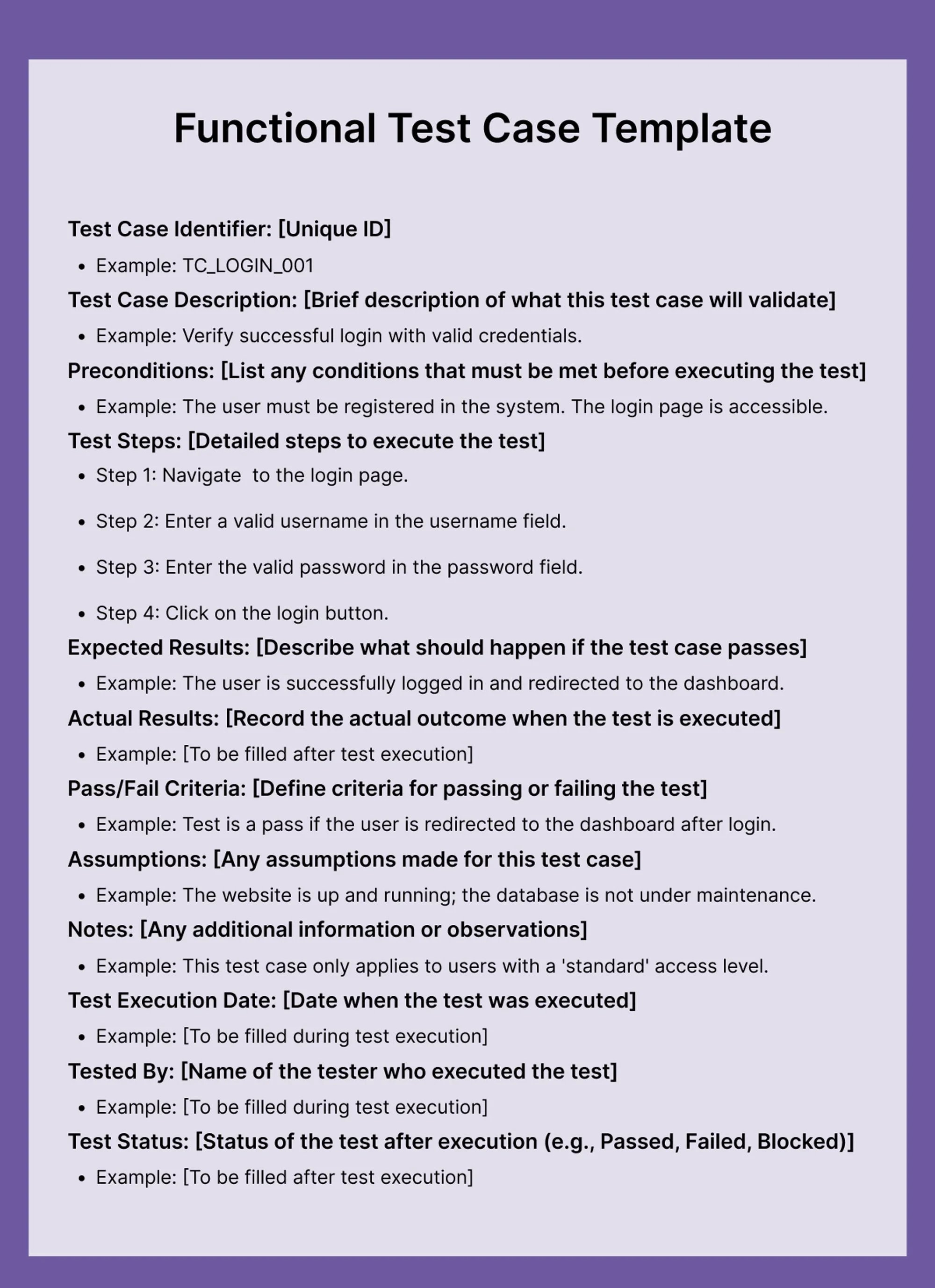15 Tips to Write Functional Test Cases [Guide]
Crafting functional test cases involves more than just a rudimentary understanding of the software. It requires detailed knowledge, meticulous attention to detail, and the foresight to identify potential challenges. The goal is not merely to fulfill a checklist of requirements but to construct a dependable framework that guides the development of reliable and user-focused software. In this article, we'll explore 15 tips to write functional test cases, a skill essential for any software tester or QA professional striving for excellence in software testing.
We can help you drive global growth, better accessibility and better product quality at every level.
What is a Functional Test Case?
A functional test case is a set of instructions that outlines how to test a specific function in a software application. For example, if the application includes a feature to send emails, a functional test case might involve checking whether an email is sent successfully when a user clicks the 'send' button. This test case would delineate the steps to take, the expected results (e.g., an email is sent, an 'email sent' confirmation message appears, and email deliverability is verified to ensure the message reaches the recipient's inbox), and the preconditions that must be in place before the test can be run (like ensuring the user is logged in and has composed an email).
Why are functional test cases important?
Functional test cases have an important role throughout the software development lifecycle:
- In the planning and design phases, they help understand and delineate requirements.
- During development, they guide developers to meet those requirements.
- In the testing phase, functional test cases are crucial for verifying that the software works as intended.
- Finally, in maintenance, they ensure that updates or changes to the software don't break existing functionalities.

Thus, functional test cases significantly contribute to delivering reliable and error-free software to end-users by systematically addressing various functionalities.
What makes a well-crafted Functional Test Case?
An effective template for a functional test case typically includes:
- Test case identifier: A unique label for easy referencing.
- Test case description: A brief explanation of the function or feature under test.
- Preconditions: Necessary conditions for the test's execution, like specific user logins or data prerequisites.
- Test steps: An exhaustive list of actions and inputs for conducting the test.
- Expected results: The forecasted outputs or consequences of the test.
- Actual results: The concrete outcomes upon test execution.
- Pass/Fail criteria: Explicit standards for deeming the test successful or unsuccessful, based on comparing expected and actual results.
- Assumptions: Presumptions made during the test case formulation or execution.
Notes: Supplementary remarks or observations pertinent to the test case. - Notes: Supplementary remarks or observations pertinent to the test case.

How to write a Functional Test Case?
Writing a functional test case involves a detailed and systematic approach. Here are 15 tips to write functional test cases you can alter to your own needs:
1. Identify the function or feature
Start by pinpointing the exact functionality you need to test. For instance, if you're testing a shopping app, you might focus on the 'Add to Cart' feature. Clearly defining the scope helps focus the test on specific aspects of the software.
2. Understand the requirements
Thoroughly review documentation like requirement specifications or user stories. If the requirement is that 'Users should be able to add items to their cart,' your test cases should specifically address this functionality.
3. Determine test steps
Decompose the test into detailed, actionable steps. For the 'Add to Cart' feature, steps could include:
- Navigating to the product page.
- Selecting a product.
- Choosing quantity.
- Clicking the 'Add to Cart' button.
- Each step should be clear and precise.
4. Define expected results
Clearly articulate what the expected outcome is for each step. For our example, after clicking 'Add to Cart,' the expected result could be that the item shows up in the shopping cart with the correct quantity.
5. Set preconditions
Specify any necessary conditions before starting the test. For instance, the user might need to be logged in, or items should be available for purchase.
6. Establish Pass/Fail criteria
Define what constitutes a pass or fail for the test. In our example, the test passes if the item is successfully added to the cart; it fails if the item is not added or the quantity is incorrect.
7. Document the test case
Use a standardized template for consistency. Include every element from the identifier to detailed notes. This structured documentation makes it easier for anyone to understand and execute the test.
8. Review and update regularly
Software evolves, and so should your test cases. Regular reviews ensure that test cases remain relevant and effective in verifying the current version of the software.
9. Take advantage of peer review
Have another tester or developer review your test cases. They might spot errors, suggest additional scenarios, or recommend improvements.
10. Use tools and software
Leverage tools like JIRA or QTest for managing test cases. These tools facilitate organization and provide features like linking test cases to requirements or bugs.
11. Include a clear and concise description
Avoid technical jargon and be as straightforward as possible. For example, instead of saying 'execute cart function,' say 'click the 'Add to Cart' button.'
12. Prioritize test cases
Focus on high-priority areas first. For an e-commerce site, testing payment processing might be more critical than testing the color change of a button.
13. Create reusable test cases
Design test cases that can be reused in multiple scenarios. For instance, a login test case can be reused in various features that require user authentication.
14. Maintain traceability
Ensure that each test case aligns with a specific requirement. This traceability aids in impact analysis and requirement coverage verification.
15. Balance coverage and depth
While you should cover as many scenarios as possible, delving deep into critical functionalities is also important. For example, testing all edge cases for payment processing is as important as ensuring that all product categories are accessible.
Who is responsible for writing test cases?
Writing test cases is usually assigned to software development, testing, or quality assurance (QA) team members. It is generally better to assign this responsibility to someone who is not involved in the coding process. Bringing in a person not part of the development phase offers a fresh, unbiased perspective, which is crucial for effective testing. This approach helps identify issues that those too close to the project might overlook.
Test Case vs. Test Scenario
A test case goes deeper into the specifics of 'how' a feature behaves under various conditions. For instance, let's consider a feature for creating an account within the app. A test case here might involve verifying that an error message appears when a user tries to register with a username that's already taken. Additional test cases for this feature could include:
- Attempting registration without entering a username.
- Including special characters in the username.
- Using a username with the maximum allowed length.
- Entering the username in mixed case (combination of uppercase and lowercase letters).
In contrast, test scenarios (sometimes called test conditions or test possibilities) encompass broader user tasks or objectives with the software. These scenarios often comprise multiple test cases to cover various outcomes. In the context of our account creation feature, test scenarios might be 'A user can successfully create an account' or 'A user cannot create an account with invalid details.'
A 'test scenario' outlines the overall purpose or goal of the tests, painting a broader picture, while a 'test case' zooms in on the detailed, step-by-step process to test specific aspects of that scenario.
Wrapping it up
Functional testing is a key player in making software development effective. It's all about ensuring the software does what it's supposed to and gives users a great experience. Well-crafted test cases make the whole testing process smoother and more efficient. This way, we can spot and sort out any problems before the software goes out to the world.
How can Global App Testing help?
Global App Testing can provide comprehensive support in creating, executing, and managing functional test cases, ensuring your software is robust, user-friendly, and ready for launch in a competitive market:
- Our team comprises experienced testers and QA professionals adept at crafting detailed and effective functional test cases, ensuring comprehensive testing coverage of your app's functionality.
- We provide testing across a range of devices, operating systems, and network conditions, essential for ensuring your app functions correctly in various real-world scenarios.
- We can swiftly scale up the testing process to accommodate tight deadlines or extensive projects, an essential factor for businesses aiming for prompt market entry.
- With our global network of testers, you can get insights into your app's performance across different regions, which is invaluable for apps with a worldwide user base.
- Beyond identifying bugs, we provide crucial feedback on user experience, improving your app's usability and customer satisfaction.
- Our testing processes can seamlessly integrate with your existing development workflows, ensuring a smooth transition from development to testing and deployment.
- We provide you with detailed reports on test cases, complete with insights and actionable recommendations, enabling developers to make well-informed decisions for app enhancement.
- In addition to manual testing, we also offer automated testing solutions, which can expedite the testing process and provide more consistent coverage.
- For ongoing projects, we provide continuous testing support, helping maintain and improve your app's quality over time, accommodating updates and new iterations.
We can help you drive localization as a key initiative aligned to your business goals
FAQ
How are functional test cases different from non-functional test cases?
Functional test cases focus on a system's specific behaviors and functions (e.g., does the login feature work correctly?). Non-functional test cases deal with non-behavioral aspects like performance, scalability, security, and usability.
What is a positive and negative test case in functional testing?
- Positive Test Case: Testing the system by providing valid input to see if it behaves as expected.
- Negative Test Case: Testing the system with invalid input to ensure it can handle such scenarios gracefully.
What are some common challenges in functional testing?
- Identifying all the functional requirements.
- Designing test cases that cover every aspect of the functionality.
- Dealing with changing requirements during the development cycle.
- Ensuring adequate coverage of both positive and negative scenarios.
Keep learning
10 Types of web application testing
Automated testing vs Manual testing - What's the difference?
62 Software testing quotes to inspire you

